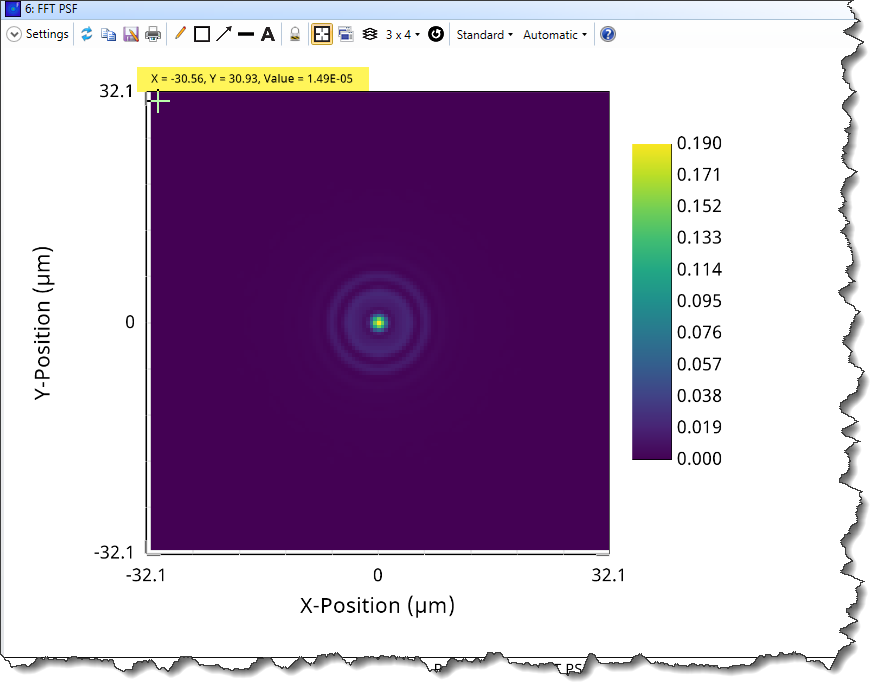The Zemax PSF (Huygens as well as FFT) is displayed in the Coordinate System (X-Position, YPosition)
This Coordinate System (CS) is identical to the local CS in the image plain, right?
No! There is a very important distinction between the coordinate systems of the Huygens and FFT PSFs. See the online help for the FFT PSF for full details, but in brief:
The Huygens PSF is computed in the image plane, as you say above.
The FFT PSF is computed on an imaginary plane which is centered on and lies perpendicular to the incident chief ray. Because the imaginary plane lies normal to the chief ray, and not the image surface, the FFT PSF computes overly optimistic (a smaller PSF) results when the chief ray angle of incidence is not zero.
The FFT PSF is the FFT of the wavefront in the exit pupil, and so the computation is done in pupil space coordinates and scaled to the image surface size. So, rotating the image surface will have no effect on the orientation of the computed PSF. The X and Y orientation of the FFT PSF corresponds to the X and Y orientation of rays in the entrance pupil, which is not always the same as the spatial X and Y orientation of the image.
To compute the PSF in the image space coordinates, use the Huygens PSF.
The text data is listed in the same order as drawn in the false color and similar plots:

Sorry to use so much bold text, but there are some important if subtle distinctions between these two PSFs that are not always grasped. If there are any differences, trust the Huygens PSF, it is the gold standard of ray-based calculations.
- Mark








